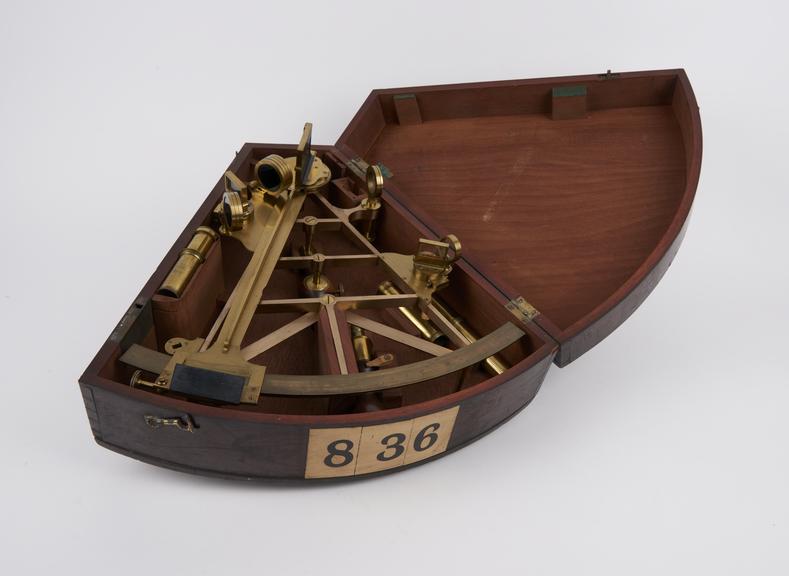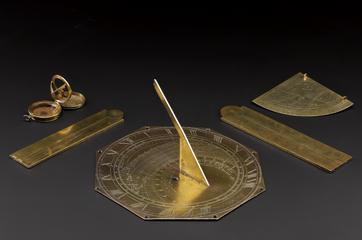Brass framed octant.
Octant made by Gilbert, Wright and Hooke, London, 1794-1801. Polished brass straight-bar-pattern frame and limb, with flat brass bars on the back for reinforcement, and a wooden handle with a brass-lined hole and milled clamping screw for the second handle. Signed on the limb: Kings Patent, GILBERT, WRIGHT & HOOKE London. Brass scale from -5° to 115° every 15', measuring to 101°. Brass vernier to 15", zero at the right. The tangent screw and clamping screw are on the back of the index arm. Four round shades (three red, one green); three horizon shades (all red). Index-glass adjustment according to Gabriel Wright's patent; adjustment of the horizon glasses by screw and capstan screws. No magnifier, a silvered plate is for reflecting light on the vernier. Threaded telescope bracket in two parts, for correcting for collimation error; perpendicular adjustment by rising-piece and milled knob. The second threaded telescope bracket is without adjustment. Telescope (85 mm) erect image; telescope (160 mm) inverted image, four cross-wires. Sight-tube (83 mm); rotating shades eyepiece with choice of clear, two red, one green. Several unidentified parts are missing.
- Measurements:
-
overall: 125 mm x 365 mm x 375 mm, 2.166kg
- Materials:
- glass , brass (copper, zinc alloy) and mahogany (wood)
- Object Number:
- 1928-925 Pt2
- type:
- octant
- Image ©
- The Board of Trustees of the Science Museum


















